
Heading into the winter growing season, it is once again time to revisit the current measures available to winter grain producers for herbicide-resistant weed management. According to the current status of the international herbicide-resistant weed database (weedscience.org), which ranks herbicide-resistant weed species by crop, the largest number of herbicide-resistant species are indeed found in wheat production systems (Photo 1).
Based on these statistics, 84 weed species commonly found in wheat have developed herbicide resistance in wheat globally, followed by 65 species in maize. Soybean production systems are ranked fourth with 53 herbicide-resistant weed species recorded.
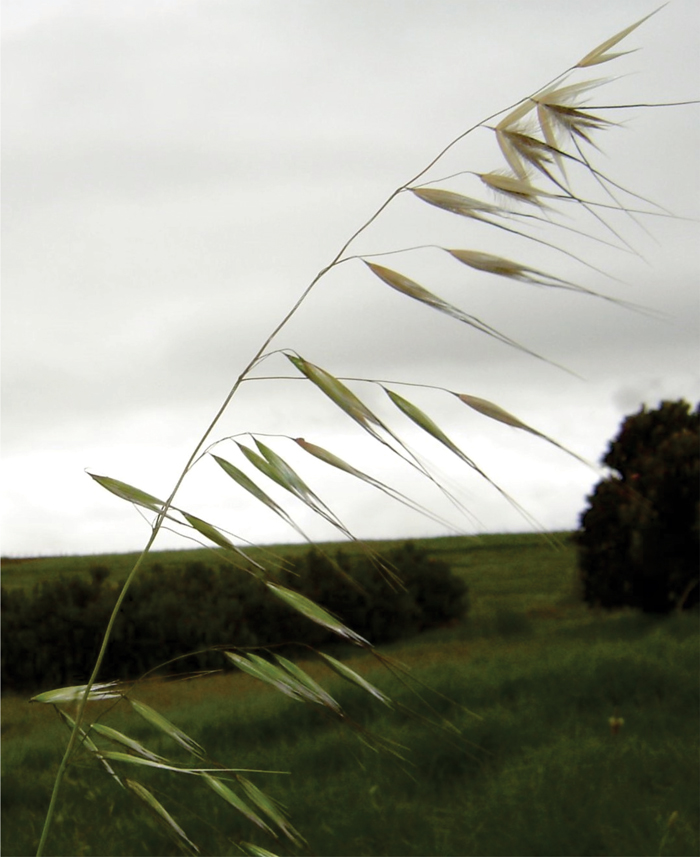
Locally grasses such as wild oats (Avena fatua; Photo 1), ryegrass (Lolium rigidum; Photo 2), wild radish (Raphanus raphanistrum; Photo 3), small canary grass (Phalaris minor; Photo 4) and chickweed (Stellaria media) have developed resistance to various actives belonging to HRAC groups 1 and 2 (Table 1) in wheat. Other general problematic broad leaves include wild buckwheat (Fallopia convolvulus; Photo 5), white goosefoot (Chenopodium album) and common pigweed (Amaranthus hybridus). When it comes to tackling these weeds in wheat productions, some basic principles need to be revisited.
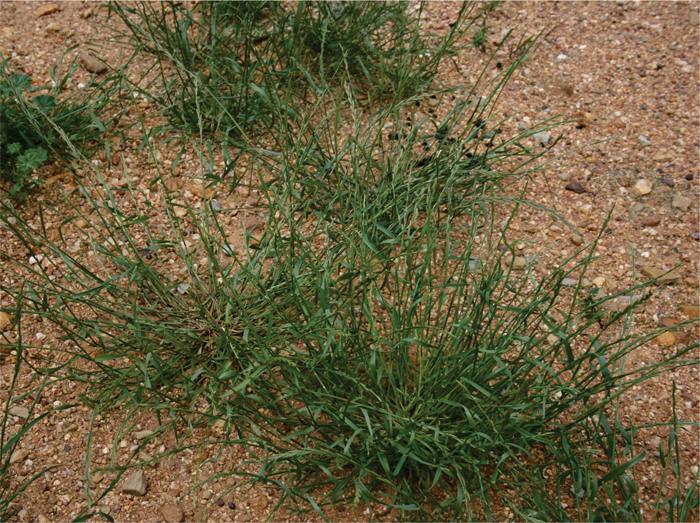
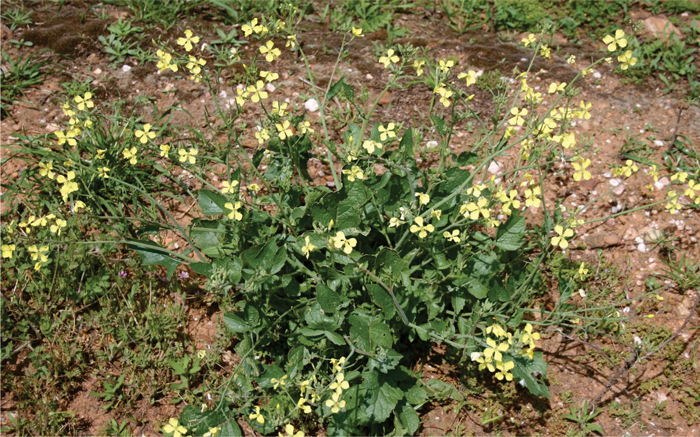
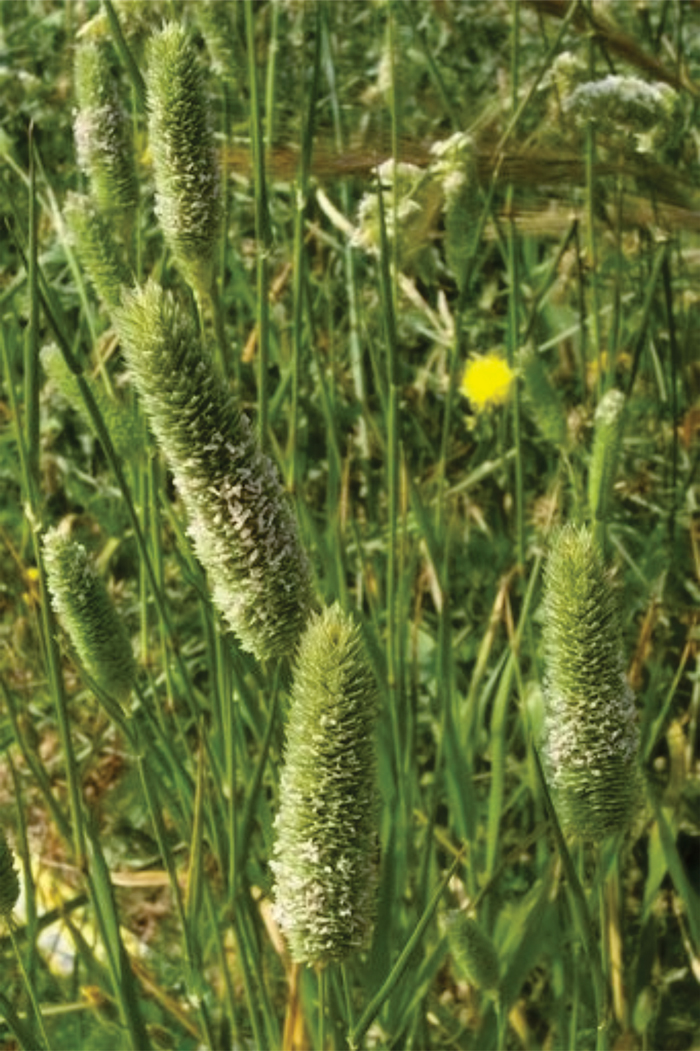
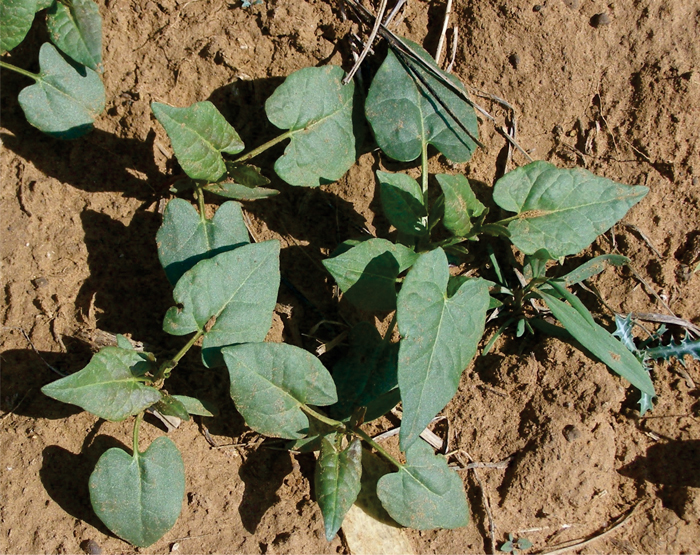
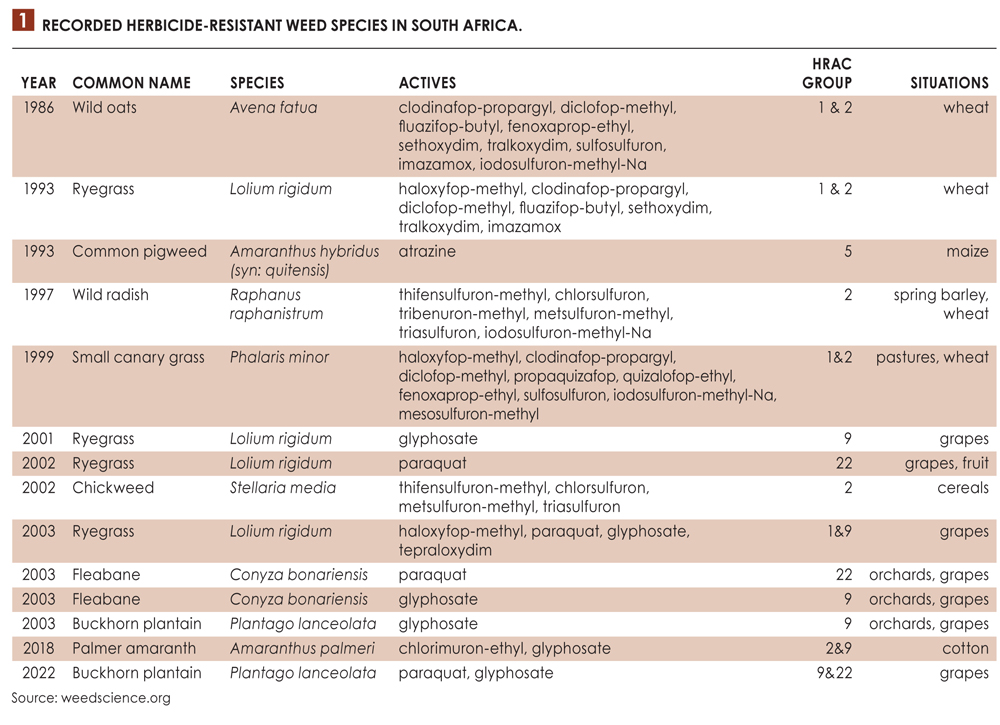 The term resistance is defined as the inherited ability of a plant to survive and reproduce following exposure to a dose of herbicide normally lethal to the wild type. Should a label rate application of a specific herbicide not provide the desired weed control on a specific weed species, it must be considered that herbicide resistance has developed. Over time a change in susceptibility in the populations will accordingly be observed, with the problematic population increasing in size every season due to lack of control achieved. Herbicide resistance develops due to excessive and continued use of the same active ingredient (herbicide).
The term resistance is defined as the inherited ability of a plant to survive and reproduce following exposure to a dose of herbicide normally lethal to the wild type. Should a label rate application of a specific herbicide not provide the desired weed control on a specific weed species, it must be considered that herbicide resistance has developed. Over time a change in susceptibility in the populations will accordingly be observed, with the problematic population increasing in size every season due to lack of control achieved. Herbicide resistance develops due to excessive and continued use of the same active ingredient (herbicide).
A second concept producers should get a firm grasp on is the HRAC groups of herbicides. Herbicide Resistance Action Committee (HRAC) groups are used to group herbicides based on their mode of action. Mode of action, in layman’s terms, refers to the area in the plant where the specific active ingredient associated with the herbicide attacks. Different HRAC groups accordingly affect the plant in different ways.
The last concept is integrated weed management (IWM). With the ease and efficiency that herbicides brought to the agricultural sector, the use of various non-herbicide weed control strategies has unfortunately been shelved by many a producer. The subsequent over-reliance on herbicides to remedy all weed problems, ushered in the new era of superweeds. IWM refers to the use of agricultural (crop rotation, row widths, plant direction, cultivar selection, planting of certified seed), mechanical (cultivation) as well as chemical (time of application, residual effects) strategies to control weeds. Much has been published in this regard and readers are welcome to refresh their memory by reading “’n Lewe met weerstandige onkruid” (SA Graan/Grain, 13 December 2023, https://sagrainmag.co.za).
When it comes to the herbicide component of the IWM programme in wheat, the approach which should be followed differs very little from that of any other crop. Herbicides (active ingredients) registered for grass control are listed in Table 2 and those for broadleaf control in Table 3. When selecting a suitable herbicide, it is important to firstly identify problematic weeds correctly. As herbicides differ regarding the weeds they can control, care must be taken to select the correct products. Should herbicide-resistant ryegrass be the main problem, herbicides from the HRAC 1, 2, 9 and 22 groups may not be effective (depending on which active the specific population is resistant against). Herbicides from other HRAC groups should accordingly be selected to ensure effective control. When selecting an alternative herbicide, the product labels should be consulted. It is, however, strongly recommended that fields heavily infested by herbicide-resistant weeds such as ryegrass, should rather be rotated with other crops for a period of at least three years. Equipment used in infested fields should be cleaned thoroughly before moving on to another field to prevent contamination of the new field.
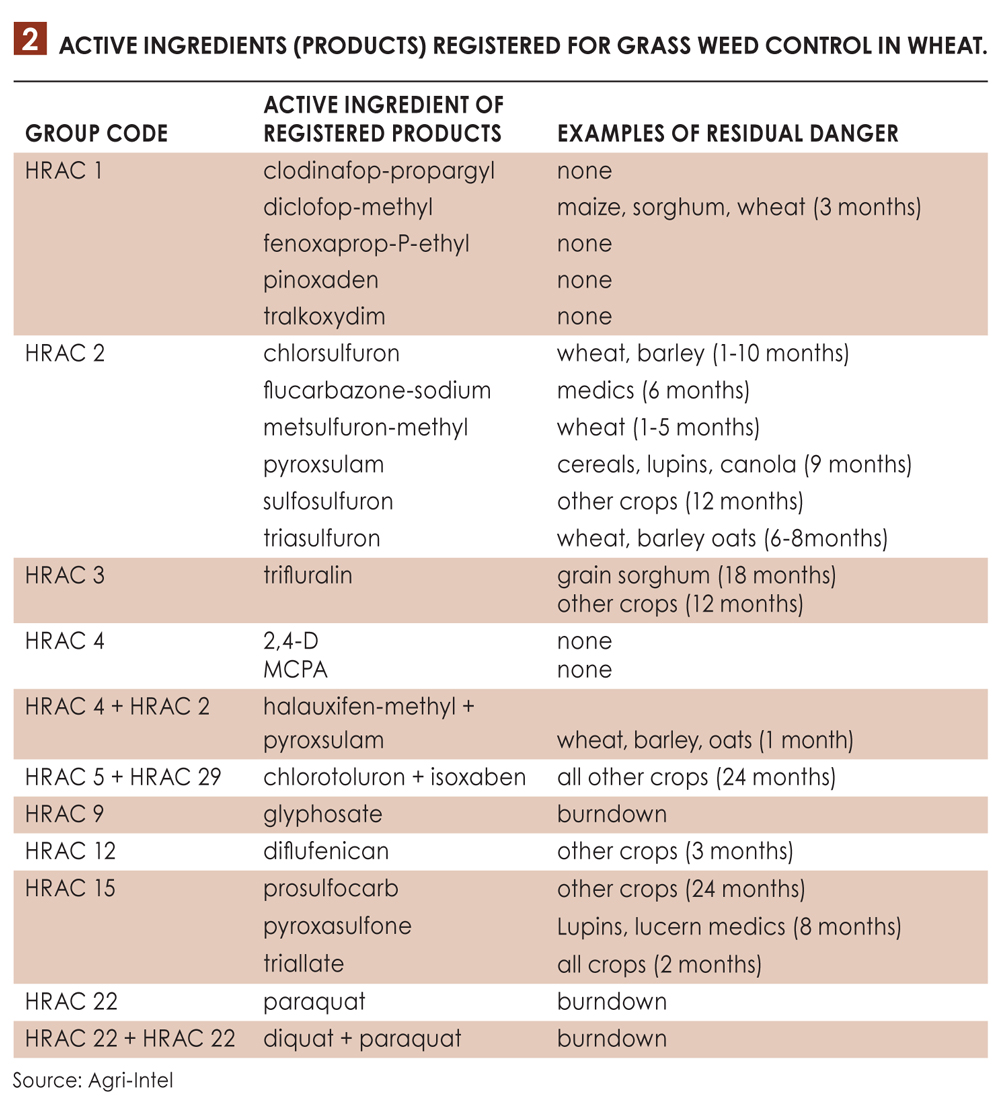
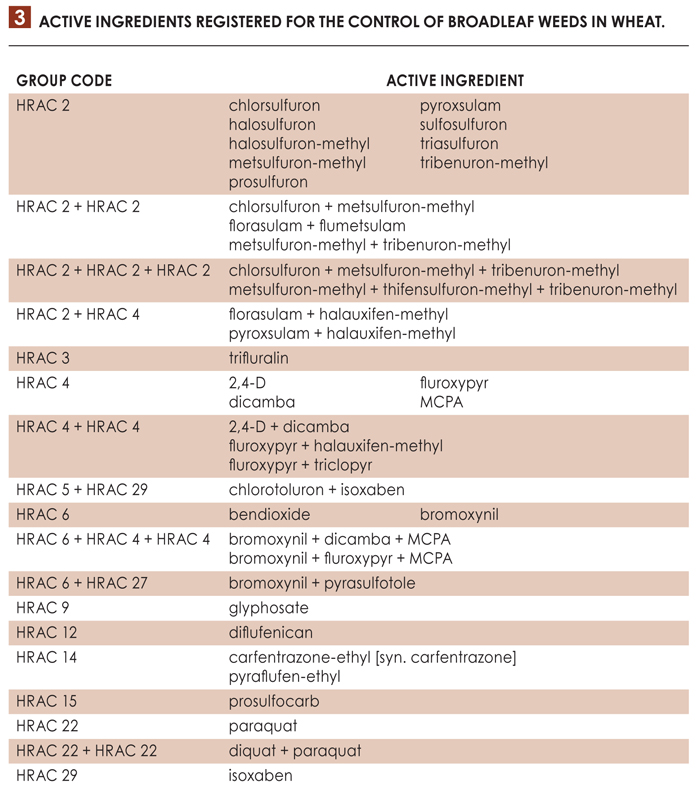 As a first line of defence, it remains essential to include and rotate herbicides from various HRAC groups. Furthermore, application of herbicides with actives that include multiple sites of action, will assist in delaying resistance development. The latter control measure can be achieved by either applying herbicides in tank mixes or by selecting products which already contain prepackaged combinations of HRAC group actives (Table 2 and Table 3).
As a first line of defence, it remains essential to include and rotate herbicides from various HRAC groups. Furthermore, application of herbicides with actives that include multiple sites of action, will assist in delaying resistance development. The latter control measure can be achieved by either applying herbicides in tank mixes or by selecting products which already contain prepackaged combinations of HRAC group actives (Table 2 and Table 3).
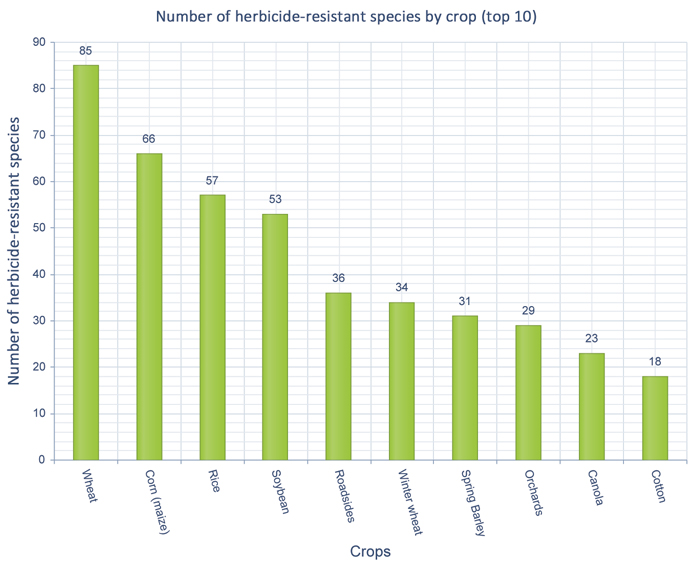
Source: weedscience.org
Since herbicide-resistant weed species are increasing by approximately ten biotypes per year worldwide, the general consensus amongst weed scientists is that pre-emergence herbicides will become increasingly important in the fight against such species. The application of pre-emergent herbicides such as trifluralin (HRAC 3) or actives from HRAC 15 (such as triallate) will greatly aid in the control of herbicide-resistant ryegrass (see respective labels as reference). However, pre-emergent herbicides require rainfall or irrigation of approximately 15 mm in order for the herbicide to effectively wash into the soil and timing of planting and spraying activities can be quite challenging. Trifularin also has noteworthy residual effects of up to 18 months depending on the crop (Table 2). Clay percentage also affects the amount of active ingredient required for effective control. Should control be successfully achieved, several weeks of weed-free conditions will be obtained during which the wheat can develop sufficiently to form a canopy cover that will suppress grass growth.
 Crop rotation is essential to enable choices of herbicides from the different groups. This way effective herbicides can stay that way and herbicide-resistant weeds do not form. Producers should also take note that some herbicides can affect a follow-up crop. Information regarding this aspect will be presented on the label of the selected product.
Crop rotation is essential to enable choices of herbicides from the different groups. This way effective herbicides can stay that way and herbicide-resistant weeds do not form. Producers should also take note that some herbicides can affect a follow-up crop. Information regarding this aspect will be presented on the label of the selected product.
Producers are welcome to contact Dr Craven with any additional enquiries at 018 299 6100.





























